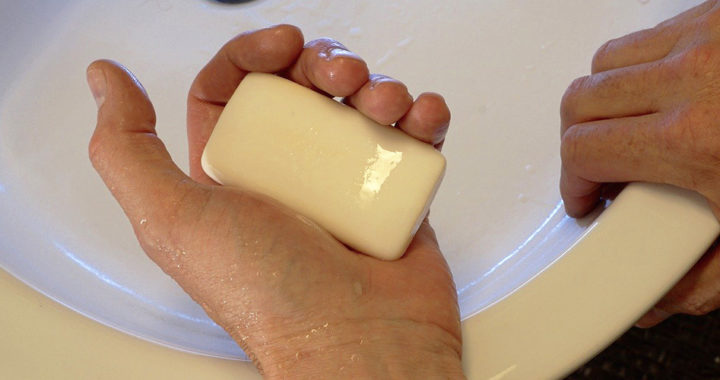The World Health Organization and other medical associations across the world have recommended handwashing using soap as one of the preventive measures against transmissible diseases. In fact, during the Ebola outbreak in Africa and COVID-19 pandemic, proper hand hygiene has been advanced as one of the solutions for containing these diseases.
The Science Behind Handwashing With Soaps
How Does Soap Work? How Does it Clean the Surface of the Skin? Why Does Soap Work Against Bacteria, Fungi, and Viruses?
• Soaps are a mixture of sodium or potassium salts of fatty acids. They are essentially made of fats and oils. These primary constituents make them effective for cleaning surfaces, as well as for working against some pathogens.
• A typical soap is specifically made up of molecules with two different ends: the hydrophilic end and the hydrophobic end. The hydrophilic end attracts water molecules while the hydrophobic end attracts dirt-containing oil, grime, and greases.
• These two ends give soaps the ability to act both as a surfactant and emulsifier. As surfactants, they lower the surface tensions between oil and water, thereby allowing the two to mix, and thereby acting as an emulsifier.
• Note that oil does not naturally mix well with water. Hence, because they are also emulsifiers, soaps suspend dirt-containing oil, grease, and grime in such a way that they can be removed and washed away with water.
• Handwashing with soap essentially pulls off grease and dirt from the skin or any particular surface, while allowing them to become suspended in water. Thus, upon rinsing, the oil, grease, or grime go down along with the water.
• Some soaps contain an antibacterial agent such as the now-banned triclosan and triclocarban, as well as widely-accepted agents such as zinc oxide, a silver compound, sulfur dioxide, and peroxide, among others.
• A plain soap can work against most viruses. The hydrophobic end of soaps can easily dissolve the fat membrane or the lipid bilayer of a virus, thus, exposing its RNA or DNA component, resulting in its molecular destruction and rendering it inactive.
FURTHER READINGS AND REFERENCES
- Donnan, F. G. 1903. “On the Emulsifying Action of Soap.” Journal of the American Chemical Society. 25(11): 1215-1216. DOI: 1021/ja02013a012
- Kawahara, T., Akiba, I., Sakou, M., Sakaguchi, T., and Taniguchi, H. 2018. “Inactivation of Human and Avian Influenza Viruses by Potassium Oleate of Natural Soap Component through Exothermic Interaction.” PLOS ONE. 13(9): e0204908. DOI: 1371/journal.pone.0204908





